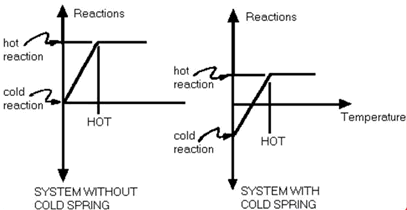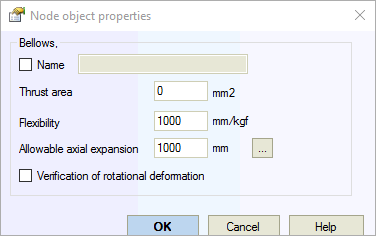

Read about START-PROF pipe stress analysis software
Cold spring usually made to reduce the support loads, nozzle loads, displacements and stresses in operating mode. But the support loads, nozzle loads, displacements and stresses in cold mode become higher. Cold spring doesn't affect the stress range between operating and cold state.
Also if temperature is above creep range then cold spring will disappear due to creep effect, in this case it should not be taken into account during stress analysis.
Conclusion: cold spring is good for reducing support loads for low temperature piping.

Cold spring could be set in node. We can imagine it like this: we cut the pipe section with dL length, after that we pull the pipe ends together and weld it. Cold spring property is it's length dL.
Let's see how to apply the cold spring on the U-shaped loop.
Without cold spring the fixed anchor loads in operating mode is much higher than fixed anchor loads in cold mode.
Example project file: ColdSpring.ctp



To estimate the cold spring length dL we have two options:



After that we can insert the cold spring in one node on the left or on the right of the U-shaped loop. But in this case we will get non symmetrical results because of friction force effect. To get the symmetrical result we can insert two cold springs on the left and on the right of the U-shaped loop simultaneously dL = 23.6 mm/ 2 = 11.8 mm.
The fixed anchor loads become almost the same in operating and in the cold state.
Example project file: ColdSpring2ctp


